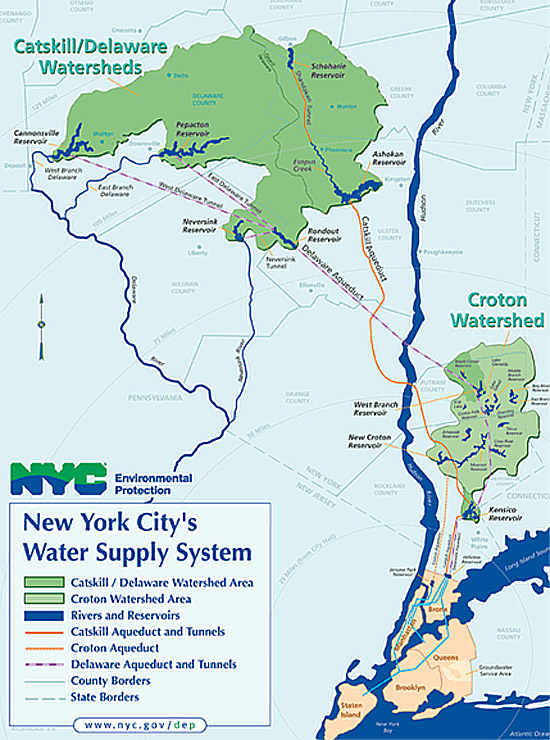|
|

|
  
2021/6/30
Watershed Report
With the Flow - New York State Watershed Report for the Week of June 28- July 3
By Gillian Ward
New York City Source Water

New York City Source Water
Watershed Agricultural Council of New York delivers education and incentives for farms operating in the sensitive New York City watersheds, demonstrating how an engaged agriculture industry can flourish without becoming a problem for water quality.
Adoption of best management practises for farms is directly linked to the quality of the New York City water supply. The Watershed Agricultural Council 2020 Annual Report announces a total of 288 Best Management Practises implemented on farms east and west of the Hudson River, another step forward in protecting water quality through best practises in waste storage, cover crops, ponds, riparian areas, filter strips, prescribed grazing and nutrient management.
Susanne Sahler is the Conservation Planner for the Watershed Agricultural Council.
According to Ms. Sahler, “I work with eighty farms…trendsetters for the entire country.” The progressively managed soils of the Dutchess, Putnam and Westchester counties have been working at better managing those same nutrients, that in excess, contribute to harmful algal blooms.
With more farms getting on board with best management practises each year, New York’s water quality is improving, due in part to efforts to improve wastewater treatment, and also from concerted attention given to restoring the soil to natural function and fertility. As more New York farms manage to improve the water filtration properties of their soil, they are at the same time reducing nutrient leaching.
Liz Taggart is has recently retired from farming in Westchester County, where she says her colleagues in organic farming have always been aware of the impact of their farming practises, not only on the water that moves through their footprint, but in the watershed as a whole.
Liz says her understanding of organic farming came as a natural extension of her grandfather’s practise, and three hundred years of organic farming tradition from the ancestral homeland of Slovenia.
From the influence of these traditions, seven members of the family have been engaged in organic farming.
How many farmers does it take to adopt best management practises to make a difference to water quality downstream? Liz Taggert says we have a good start, but more positive impacts will be evident when soil regenerative critical mass is achieved in the agricultural community.
If this sounds like its too far off, it may not be. We can find examples in nature of critical mass, a scientific concept that explains how less than 1% of a system can shift the trend of the entire system, with intentions, thoughtfulness and intelligent action that produces tangible results.
The Bionutrient Food Association (BFA) certainly has been a leader in scientific discovery in agriculture. The scientists in this group, partnered with Yale University, are working to perfect regenerative farming practises that maximize nutrient density in the crops. Contrary to what one might assume, nutrient value in food production is less adding copious amounts of nutrients to the fields. Instead, it is the direct reduction of synthetic fertilizers and chemicals that promotes plant quality; efforts to support the microbiome with intelligent tillage and providing cover crops at all times that is contributing to cleaner water in the city.
|
|
All rights reserved 2025 - WTNY - This material may not be reproduced in whole or in part and may not be distributed,
publicly performed, proxy cached or otherwise used, except with express permission.
|
|